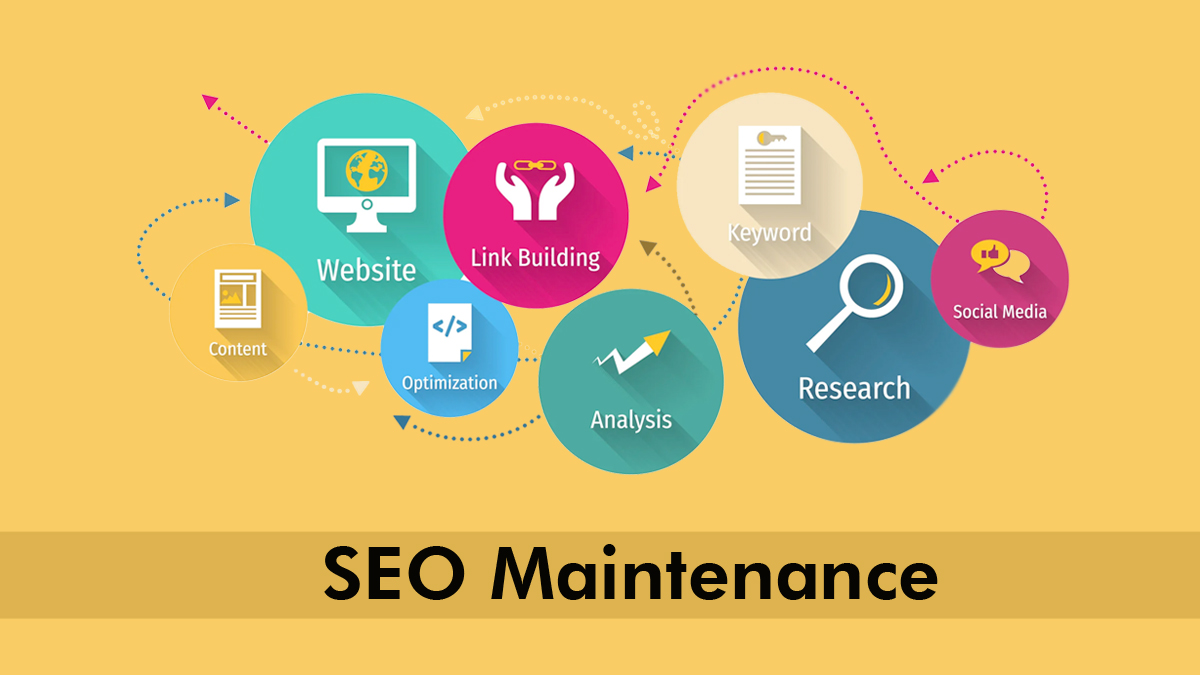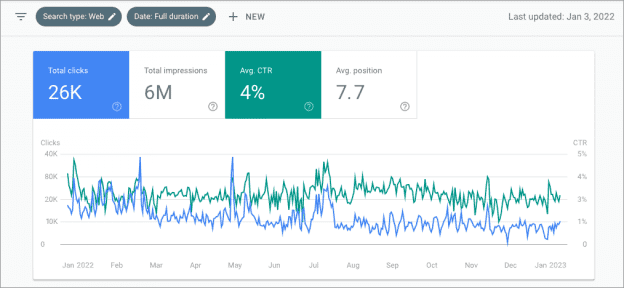
Mastering and continually updating effective SEO maintenance strategies is crucial for sustaining a strong online presence, especially as the landscape of search engine optimization evolves. In this article, we’ll explore the ongoing nature of SEO—it’s not a one-and-done deal but a continual process that reaps long-term benefits.
This endeavor necessitates consistent adjustments and updates, similar to routine check-ups that guarantee enduring success and optimal performance. Let’s delve into how to keep your SEO robust and relevant in an ever-changing digital environment.

Before diving into any maintenance tasks, it’s vital to grasp what SEO maintenance entails. Simply put, SEO maintenance involves making regular changes and improvements to your website or digital content. The objective is to align continually with the fluctuating criteria of search algorithms while delivering an exceptional user experience.
Hiring an SEO services provider for SEO maintenance is crucial for sustaining high search engine rankings, driving consistent organic traffic, and staying ahead of ever-changing algorithms.
Let’s unpack the significance of this concept and the activities it encompasses.
A common query from many of our clients is whether SEO is a task that can be ticked off the list after just one round of effort. The straightforward answer is no. Initial steps for boosting your website’s visibility in search engines include research and implementation of appropriate keywords, on-site optimization, and link-building strategies for your site.
However, completing these tasks is merely the starting point. It’s crucial to remain vigilant, given that both competition and search engine algorithms are in a state of perpetual change and refinement. Short-term victories do not guarantee long-term success.
Understanding that SEO is not a one-off task allows us to delve into the notion of ongoing SEO maintenance. This involves routinely assessing your website’s performance metrics—such as search rankings, organic traffic, and user engagement. Concurrently, you’ll need to promptly address any issues that arise, such as broken links or slow-loading pages.
To maintain strong SEO, updating outdated content and enhancing existing pages are also crucial steps. While this may initially seem daunting—given the regularity with which SEO demands attention—a well-organized monthly task calendar can simplify the process.
Also read: FROM ONE SEO AGENCY TO ANOTHER: TOP 11 SEO PROJECT MANAGEMENT INSIGHTS
Maintaining your website’s SEO isn’t just another task to add to your to-do list; it’s an essential activity for preserving your site’s visibility and overall digital health. Let’s discuss why regular SEO upkeep is indispensable.
Google rewards websites that offer excellent user experience and feature regularly updated content. By consistently fine-tuning your SEO, you signal to Google that your site remains a relevant and valuable resource for users, thereby increasing your chances of ascending in search rankings.
Good SEO is about understanding and meeting the evolving needs of your online audience. Periodic adjustments to your strategy can better align with these changes, attracting more targeted and high-value visitors to your website.
An integral part of SEO maintenance is ensuring your website loads swiftly and is optimized for mobile browsing. These factors are critical for user satisfaction, leading to lower bounce rates, increased engagement, and ultimately, more favorable outcomes.

Websites committed to ongoing SEO maintenance often deliver faster, more user-friendly experiences, leading to increased user engagement and, subsequently, more conversions or purchases. In today’s competitive marketplace, staying vigilant in optimizing your website for search engines is crucial.
Consistent maintenance not only helps you keep pace with competitors but also allows you to swiftly seize new opportunities. It’s essential to understand that SEO is an ongoing effort, not a one-time task. The time and resources spent on maintenance are investments that offer valuable returns.
SEO maintenance can be broadly categorized into three types: Technical, On-Page, and Off-Page. Let’s delve into each.
Technical SEO maintenance focuses on enhancing your website’s back-end performance rather than the content itself. This significantly impacts your site’s search ranking. Key elements in this category include:
The term ‘on-page’ refers to all the elements within your website that you can control to optimize it for search engines. This involves tactics like optimizing meta tags, headers, and the content itself. Key components include:
By creating quality content and paying attention to these factors, you improve keyword effectiveness and readability, thus boosting your SEO score.
Off-page SEO covers all the actions taken outside of your website to improve its visibility in search rankings. This includes link-building, social media engagement, and online reputation management. Unlike on-page SEO, which you can directly control, off-page SEO relies on external elements. Important aspects to focus on are:
Off-page SEO essentially shapes the perception of your website in the eyes of both users and search engines. Although it might seem more challenging to manage, it’s crucial for your website’s overall SEO health. Both on-page and off-page SEO have distinct strategies but share the ultimate goals of enhancing your website’s visibility, driving more traffic, and improving its search ranking.
A crucial aspect of SEO maintenance is making sure all your website pages are indexed by search engines. To do this, you need to routinely verify that each page appears in search results when its URL is queried.
If a page isn’t indexed, it won’t be visible to users searching for information. Tools like Google Search Console can help you identify which pages need to be submitted for indexing.
Google increasingly prioritizes mobile-friendly websites. In fact, if your site isn’t optimized for mobile use, you risk losing significant traffic since many users browse on mobile devices.
You can assess your site’s mobile-friendliness using Google’s Mobile-Friendly Test tool or by manually checking it on various mobile devices. The objective is to enhance user experience across all platforms.

Broken links negatively impact user experience and should be regularly identified and corrected. Trustworthy tools like Screaming Frog or Ahrefs can help you locate and repair broken links on your site, as well as links that originate from external sources.
Monitoring the ranking of your keywords gives you insight into the effectiveness of your SEO efforts and their impact on organic traffic. Software like SEMrush can provide real-time performance reports for your keywords, giving you tangible data to refine your strategy.
Slow loading times can cause users to abandon your website, negatively affecting your bounce rate. To improve load times, consider optimizing images, leveraging browser caching, removing redundant code, and using a content delivery network. Google’s PageSpeed Insights is an excellent tool for diagnosing speed issues and offering solutions.
Smart internal linking not only enhances user navigation but also helps search engines index new pages and understand the relevance of keywords in the content. Periodically review and update the internal linking structure within your website to maintain optimal search engine performance.
Google considers the quality and quantity of backlinks when ranking websites. SEO Tools like Moz can help you monitor your backlink profile. If you identify any harmful backlinks, disavow them promptly. Continuously work on acquiring high-quality backlinks to show Google that your content is valuable and worthy of citation.
Improving user experience involves streamlining your website for ease of use and enjoyment. Ensure the site is navigable, mobile-friendly, and easy to read. Offer straightforward contact options and clear calls to action to guide users through their journey on your website.
Ensuring the accuracy of your local business information is crucial. Inconsistent or incorrect information can mislead potential customers and harm your credibility. Make sure your business name, address, and phone number are consistent across all platforms, including Yelp, Google Business Profile, and others. Accurate listings not only aid in customer navigation but also improve your search engine ranking.
Regular SEO maintenance will give you a competitive edge, drive quality traffic, and facilitate consistent growth for your business.
A frequently asked question in the world of SEO is, “How often should SEO tasks be performed?” Contrary to some misconceptions, SEO isn’t a one-and-done effort; it requires ongoing attention and consistent effort. Here’s a guide on how frequently you should engage in various SEO activities.
These tasks include continuously updating keywords, optimizing content, enhancing site speed and performance, fixing broken links, monitoring analytics, and staying current on SEO trends and algorithms. Search engines like Google frequently update their algorithms—sometimes without public notice. Consistent monitoring and adjustment of these SEO aspects are crucial for success in this dynamic landscape.
These proactive steps help your website maintain its visibility and functionality, even when search engine guidelines change.
These are activities conducted on a monthly basis to sustain and improve your website’s SEO performance. Monthly tasks contribute to your broader goal of higher rankings and help identify areas for improvement.
By diligently performing these monthly tasks, you not only enhance your website’s search engine visibility but also ward off any potential advantages your competitors might gain due to your weaknesses.
Quarterly SEO maintenance involves a deeper dive into aspects like keyword reviews, website navigation enhancements, and page loading speed optimization. This periodic review isn’t just a short-term initiative; it contributes to maintaining stable search rankings over the long term.
Annually, your focus should shift to broader strategies and preparations for upcoming activities. Though conducted once a year, these tasks are instrumental for sustaining long-term growth.
If you’ve ever wondered, “Is ongoing SEO maintenance crucial for my business?” the unequivocal answer is yes. A common misconception among business owners is that SEO is a one-off task. This couldn’t be further from the truth.
Maintaining an effective SEO strategy is akin to any other form of marketing: it demands continual attention and effort. Think of your website as a constantly operating machine. Over time, some components may falter or break, and industry innovations continually emerge. Regular SEO maintenance ensures that your machine—your website—runs smoothly, adapts to changes, and remains competitive.
SEO maintenance services encompass a range of activities designed to ensure that a website remains competitive in search engine rankings. These include regular keyword review and optimization, enhancing web page SEO, backlink analysis and creation, content development, and future strategy planning.
Hiring professional services ensures that these activities are executed in a methodical and effective manner. Experts adhere to well-defined checklists and schedules, drawing upon best practices. Typical elements of professional SEO services include:
The cost of maintaining a website’s SEO can vary based on its size and specific objectives. Expect to allocate between $1,000 and $3,000 per month for quality services from reputable providers.
While the initial investment might seem steep, particularly for small businesses, the importance of regular SEO tasks and ongoing analysis cannot be overstated. This is crucial for improving online visibility and maintaining a competitive edge. The investment ensures that you don’t miss out on potential customers who might otherwise struggle to find your business among competitors.
The principle “You have to spend money to make money” aptly applies to SEO. It’s not merely an expense but an investment in your business’s future growth. Ongoing SEO maintenance is a long-term commitment that can yield sustainable results.
These tools are essential for the continuous SEO management and optimization of a website’s SEO initiatives. These tools play a critical role in tracking and enhancing a site’s standing in search engine rankings.
While there are numerous tools designed to simplify SEO maintenance, the key is to utilize them effectively to meet your objectives. Here are some commonly used tools:
Ahrefs is an excellent resource for gauging your website’s search engine performance. It provides comprehensive and insightful data about how well your site is doing. With features like keyword and content research, Ahrefs simplifies daily SEO tasks. Moreover, its robust backlink analysis capabilities make it invaluable for effective off-page SEO maintenance.
SEMrush offers a range of valuable features for enhancing your website’s SEO, including competitive research and position tracking. One of its standout qualities is the ability to uncover and analyze your competitors’ strategies, giving you a competitive edge. It’s particularly useful for managing monthly SEO chores.
For those looking to maintain their technical SEO, Screaming Frog offers a suite of beneficial tools and features. This UK-based software is popular among digital marketers worldwide due to its effectiveness in scouring and analyzing website data. It enables you to promptly identify and resolve issues such as broken links or missing meta descriptions that could negatively impact your website’s performance.
Google’s PageSpeed Insights is a valuable tool for evaluating a website’s loading speed across various devices. This tool not only measures performance but also offers actionable recommendations for enhancing load times. Faster load times are essential for both user satisfaction and achieving higher rankings in Google search results.
Moz is another versatile tool well-suited for ongoing SEO tasks. It assists in keyword research and monitors your website’s standing in search engine rankings. With its user-friendly interface and detailed reporting, achieving optimal SEO has never been easier.
Wrapping Up
SEO maintenance is not a “set it and forget it” endeavor; it demands consistent effort to improve your website’s performance. Regular activities such as fixing broken links, optimizing page speed, and ensuring mobile responsiveness are crucial for enhancing both user experience and business impact.
Due to the ever-changing nature of search engine algorithms, it’s imperative to perform routine SEO tasks either monthly or quarterly to foster organic growth and improve search rankings. It’s important to note that achieving a high ranking is not the end game; continuous improvement is key to maintaining a competitive edge.
The cost of SEO maintenance services can vary, but the investment is well worth it, as it can yield long-term benefits. Whether your SEO management is in-house or enlist professional help, routine maintenance is crucial for ensuring a positive user experience and satisfying customers. Keep this in mind as you hone your SEO skills.
SEO maintenance involves the consistent execution of tasks to ensure the efficacy of a website’s SEO strategy. This encompasses monitoring, adjusting, and enhancing various website components to maintain high visibility in search engine rankings. SEO maintenance is crucial as search engine algorithms are in a constant state of flux, requiring websites to adapt in order to remain competitive.
Effective SEO maintenance requires a multi-faceted approach, including monitoring keyword rankings, analyzing website traffic, rectifying broken links, updating content, refining meta tags, ensuring mobile-friendliness, and evaluating backlinks. Staying abreast of industry trends and search engine guidelines is also essential.
The frequency of SEO maintenance tasks can vary, but some activities, such as monitoring website traffic and identifying broken links, should be conducted regularly—either weekly or monthly. While certain aspects of SEO, such as sitemap generation, can be automated, many tasks require manual intervention and informed decision-making based on data analysis and industry insights.
Neglecting regular SEO maintenance can lead to diminishing search engine rankings, reduced website traffic, and a weakened online presence. Failing to adapt to evolving search engine algorithms and user preferences may result in losing ground to competitors, ultimately affecting website traffic and customer acquisition.
Subscribe to learn how to grow and scale your business through white labelling, starting with this free guide. Unsubscribe with one click at any time.
We hate SPAM and promise to keep your email address safe. Here’s our privacy policy.